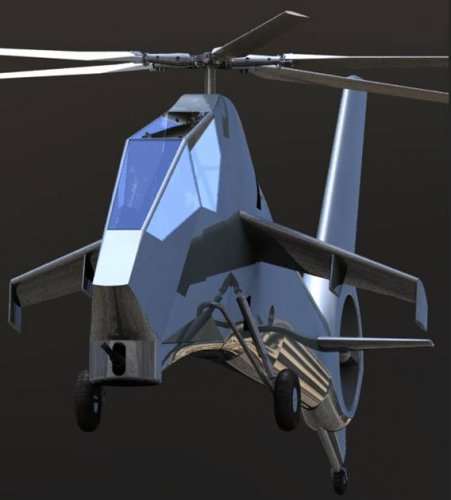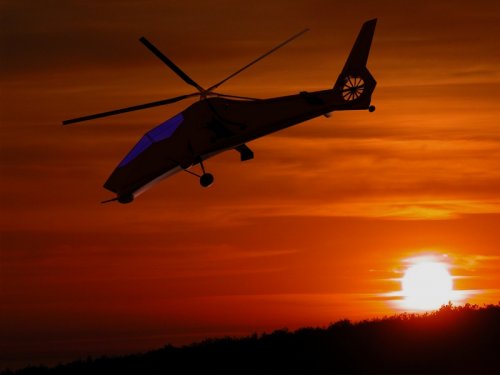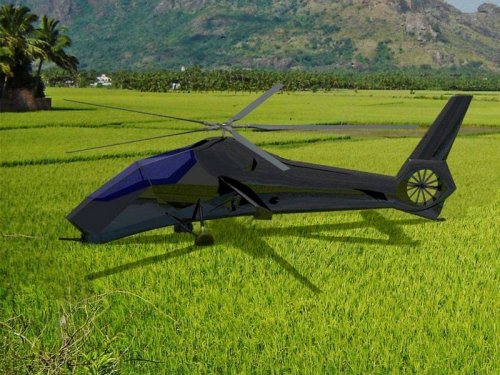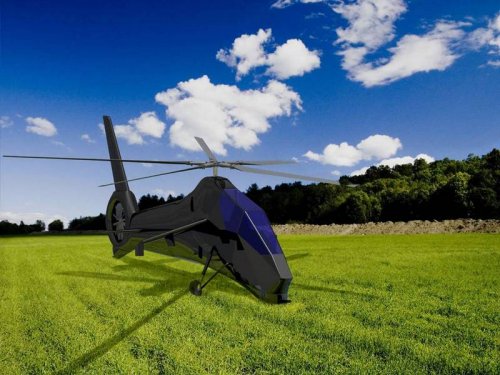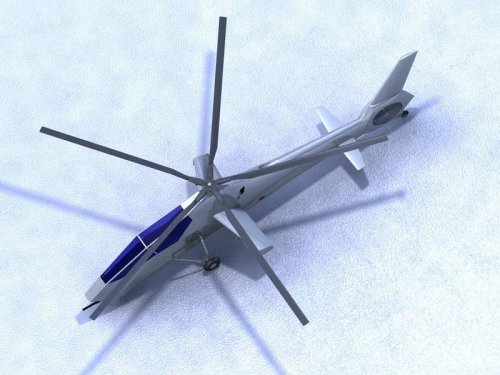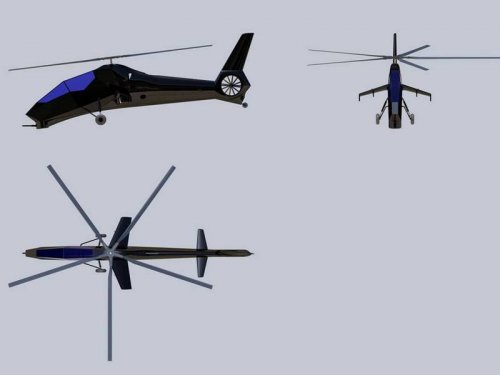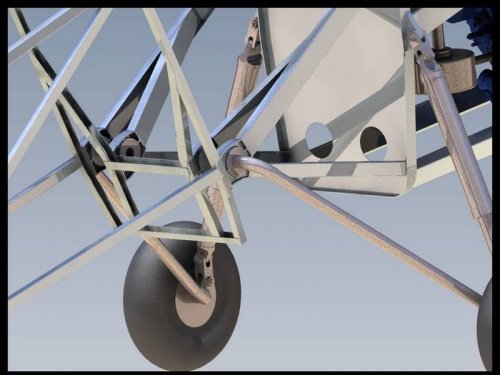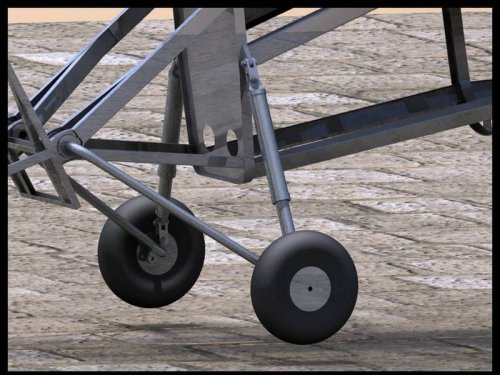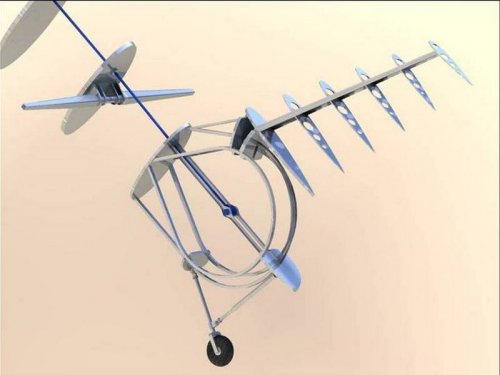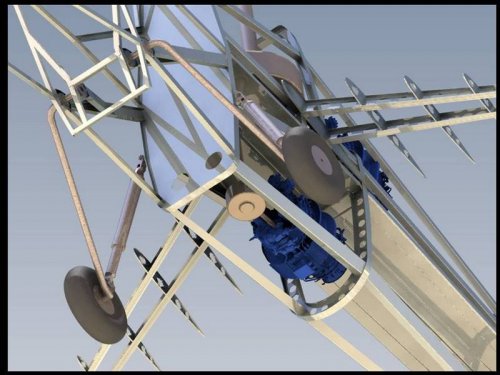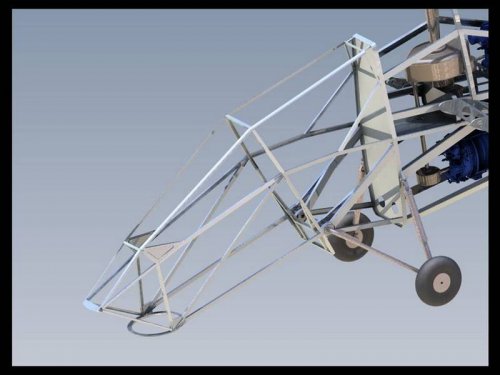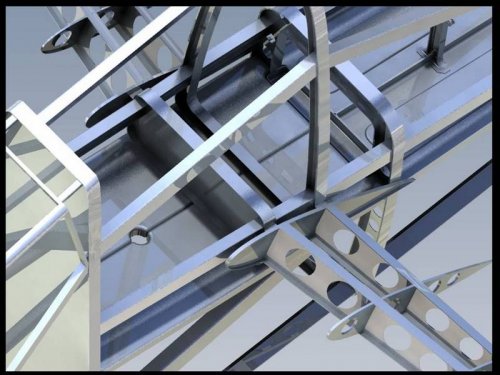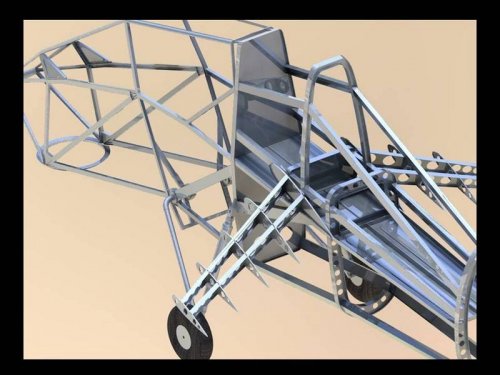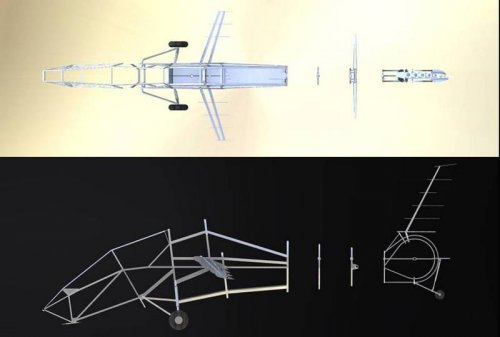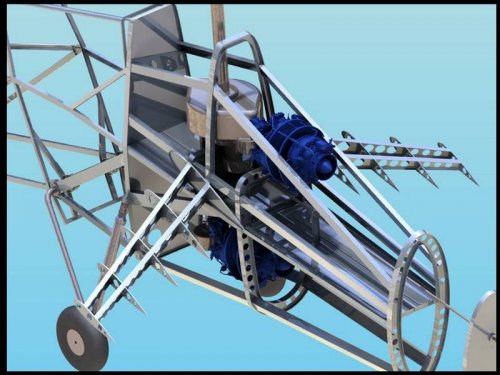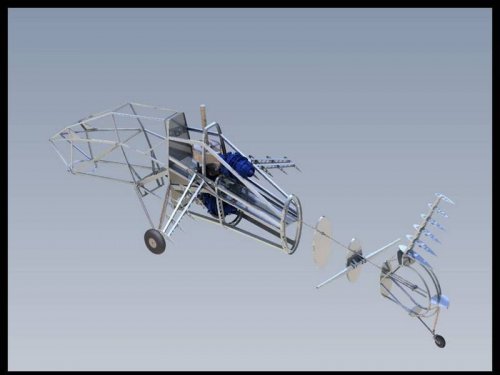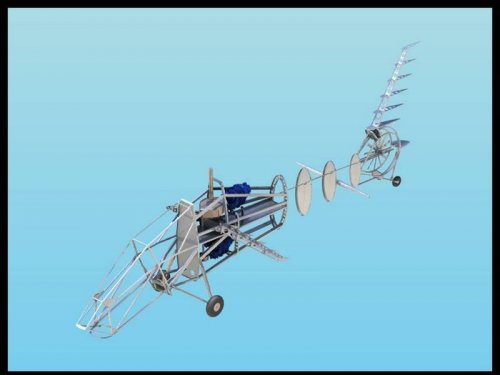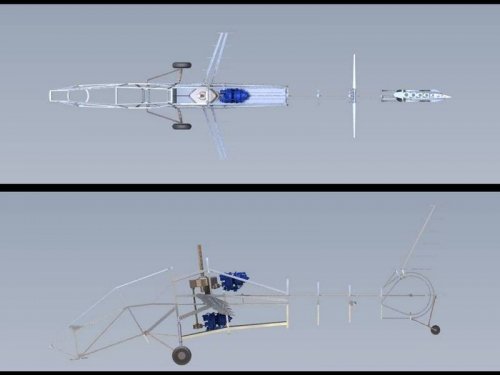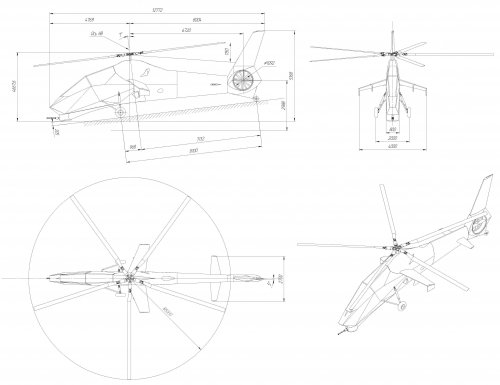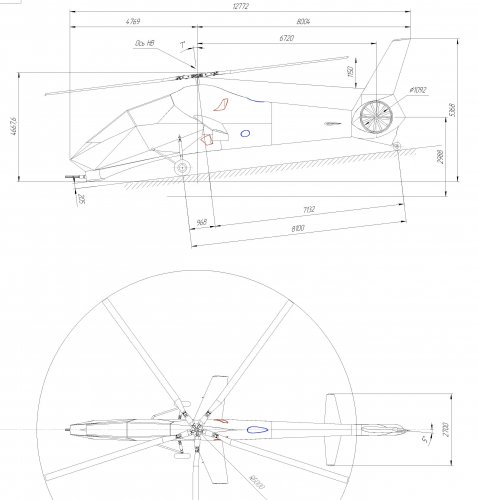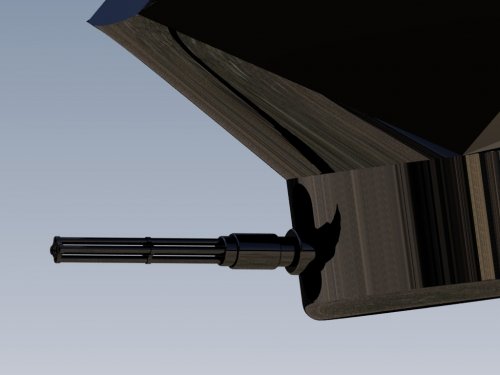Thank you for your replies.
Special thanks to Pioneer. It's a great idea to fit this helicopter into An-12/C-130 cargo compartment.
I think I will try to do this in next iteration. Right now it could fit, but without wings, stabilizers, fin, main rotor and it should be tilted. So it will take a day to disassemble and load it on board, and then another day to unload and assemble.
I'll think it over about rotor-folding mechanism. It can be very useful, but that joint can become a real problem.
About engine: I have some information about basic AI-450, and almost nothing about it's 800 hp modification, which I used in design. It's turned out I don't even know the right name. I was told that they doing 800 hp modification called TP and 1000 hp modification called AI-450-2.
to Apophenia: Do you have more information about AI-450-2? Is it 600 hp or 800 hp? Because 600 hp is not good at all. According to calculations, even with 2x800hp it has not so perfect flight characteristics. And with 2x600 it wouldn't even reach 220 km/h.
I was thinking a lot about engine accessibility. And still I overlooked some things. I looked just now and understood that main gearbox cannot be replaced without removing beams above him. And I also screwed up with two beams near the upper engine. That engine and those beams are intersecting. That's because I added those beams just before the graduation presentation.
But actually if dimensions of the 800 hp engine won't change (which I doubt) after some redesigning engine accessibility should be pretty good.
I think that for marketing and versatility purposes though, you should consider some sort of anti-armor capability. Maybe in the form of attachable pod-type sighting/targeting system and a couple of light-weight ATGM or a podded 20mm cannon.
For I think the more versatile you make the design to customer wants and needs, the more likely you are to market it and more importantly sell and manufacture it in any numbers - if any.
Of course you right about versatility of the design. I wrote that it's anti-infantry because this niche is free. All of specialised attack helicopters are either antitank or reconnaissance. And this one is specialised anti-guerilla. Well, it can be equipped with anti-armor weapons. And there is some place for sighting equipment in the nose. But it shouldn't be too heavy because there can be problems with centering. Armor is pretty heavy. But I don't know how heavy it is. I found information about special steels and about Kevlar, but they are not so heavy in comparison with armored glass. And all information that i found about armored glass was information about armored glass for bank buildings. That glass is 84 kg/m^2. It's capable of resisting bullets up to AKM and M-16.
Back to versatility. I think that armor can be removed and armored glass replaced with ordinary. And then helicopter can be equipped with heavy sighting equipment and can be used the same way AH-64 supposed to be used. I mean attacks from afar with precision weapons.
Okay, next point. Weapon load is 1000 kg on four hardpoints.
Well if it's anti-guerilla, which means, let's face it, human-hunting, I would call it Shere-Khan (you know, form Rudyard Kipling's Mowgli).
This engine is pretty interesting because it has single-stage radial compressor. And air intake's are on the sides of the engine. So they are on the sides of the helicopter. They can be seen on the side view in the drafting which I attached to this reply.
There is a load bearing element between the lower engine and the main gearbox and upper engine. It is also a fire-resisting bulkhead, and maybe it can be armored with Kevlar or something like this.
I didn't consider single-seater. One man cannot handle control and weapons simultaneously. Only two men or one man plus special equipment like Ka-50. And I read that it takes up to 2 hours to programm Ka-50 for a specific conditions (weather, etc.) but this information is not 100% reliable. Besides, it wouldn't make the helicopter any thinner, because it's already 800 mm. Thinner than that can be only unmanned, like "Snark". And it would need a lot of special equipment and complex programs. So I don't think it would make the helicopter any cheaper, but if we consider the cost of gunner's training... Well it's really complex question. Generally I think that if we replace gunner with a computer we should do the same with a pilot. So it's either a two-seater of unmanned.
And about structure of the helicopter. Does anybody know where I can find any information about the structure of modern helicopters? For now I found only this operation manual for Ah-64 and Ch-47 at www.tpub.com

